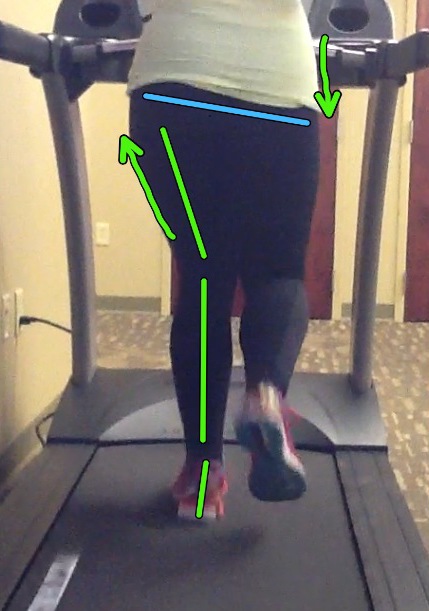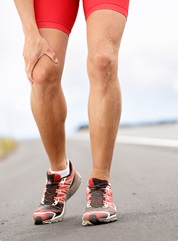Why Did The Runner Cross Over?

I promise this isn’t the opening line to a bad dad joke! We see runner’s coming to our clinic all the time with cross-over gait. Some are injured and some are looking to improve performance. Whether it’s leading to injury or decreasing running efficiency, this gait issue should be corrected to stay healthy and improve performance.
What is Cross-Over Gait?
If you drew an imaginary line down the middle of your body, cross-over gait occurs when your foot lands either on or across that imaginary line. Here are two easy ways to evaluate if you run with this poor movement pattern.

The first way involves using your cell phone and a treadmill. Set up your phone several feet behind the treadmill so you can record yourself running. I recommend doing this at the end of a run, so you’re already fatigued and not starting fresh. Many aches and pains or running injuries tend to creep up or get worse toward the end of a run. Filming at the end of a run will give you a better idea of what your gait looks like when you’re tired. Take a look at the video and see if your feet are crossing over that imaginary line.
The second way involves running on the side of a road with a painted white line. I feel like I shouldn’t have to say this, but please make sure there is no oncoming traffic! Position the white stripe under the midline of your body. If both feet are hitting the white line, you’re running with a cross-over gait.
Is Cross-Over Gait Bad?
This gait is considered pathological or “bad” for two reasons. First, it is inefficient. Running is a mostly sagittal plane activity. This means your torso and limbs should be moving forward and backward, not side-to-side or rotating. A cross-over gait involves excessive side-to-side and rotational movement. This wastes energy! Whether you consider yourself a runner or a jogger, you know how important it is to be as efficient as possible.
The second reason cross-over gait is considered pathological involves injury prevention. The excessive side-to-side or rotational movement mentioned above, means you use muscles differently than you should or don’t use certain muscles at all. This imbalance between muscles or overuse of certain muscles often leads to injury. A perfect example of this involves using the tensor fascia latae and IT band to stabilize the hip and pelvis instead of using the gluteal muscles, primarily gluteus medius. When this happens, it often leads to IT band syndrome, hip pain, or knee pain.

Injuries Due to Gait Issues
There are many running injuries that correlate either directly or indirectly with cross-over gait. If you’re struggling with one of these injuries, check out these posts for more specific information.
This is part 1 of a series on cross-over gait. Part 2 covers more information why this gait issue occurs and how to correct it.

 262-373-9168
262-373-9168



